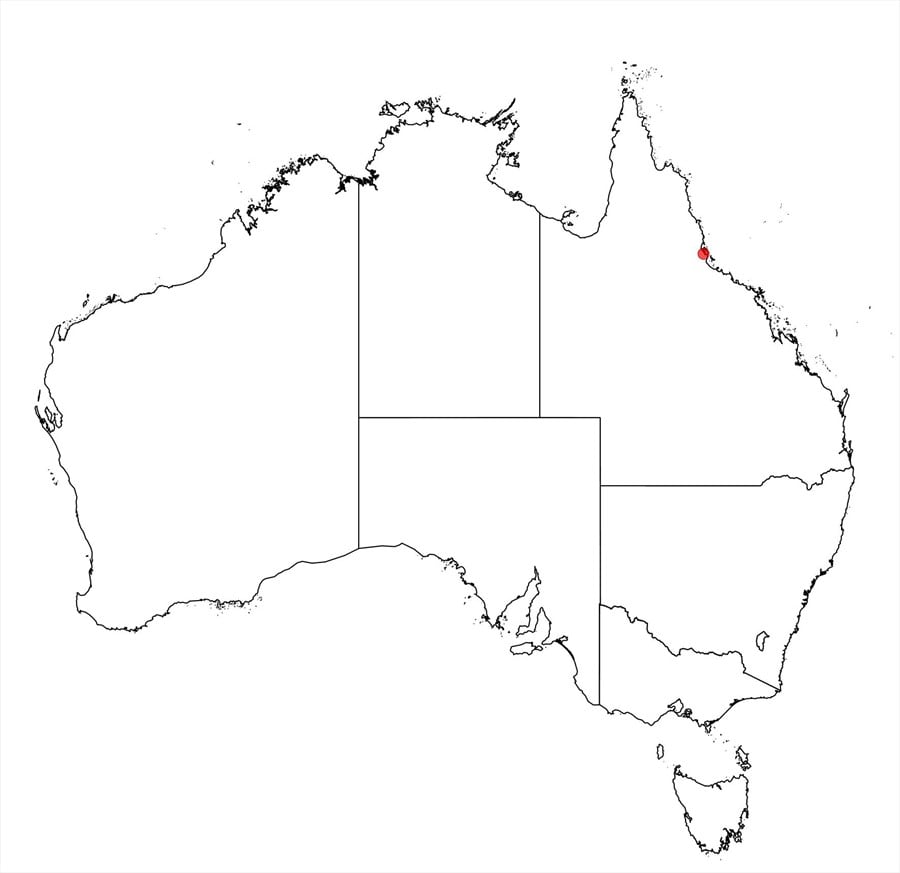Acacia lumholtzii Pedley
WATTLE
Acacias of Australia
Family
Fabaceae
Distribution
Restricted to Bishop Peak (alt. 866 m) in the south-eastern part of Girrigun Natl Park, S of Cardwell, Qld. Occurs on granite, on rock pavements and cliffs near the summit.
Description
Shrub 2–4 m high. Bark cream coloured, lenticellate. Branchlets ribbed below insertion of phyllodes, densely appressed pubescent with dark brown hairs. New shoots densely appressed pubescent, the hairs yellow tinged brown or dark brown. Phyllodes linear, narrowed at base, 8–10 (–11.5) cm long, 3–4 mm wide, appressed hairy on at least the main nerves but sometimes also the margins, with normally 7 (sometimes 3) widely spaced, prominent longitudinal nerves with sometimes occasional anastomoses in between; gland single, obscure, 2.5–8 mm above pulvinus. Inflorescences (few present, depauperate) seemingly short racemes to c. 10 mm long; peduncles 12–20 mm long, appressed hairy, basal bract persistent; heads globular, 4–5 mm diam., 25–30-flowered, distal head maturing much before the others; bracteoles spathulate, the tip slightly oblique. Flowers 5-merous; calyx gamosepalous, c. 1 mm long, the lobes obtuse, c. 0.4 mm long and with dense tangled ±appressed hairs. Pods narrowly linear, ±not constricted between seeds, to 13 cm long, 4–5 mm wide, thinly crustaceous, sparsely appressed hairy, dark brown, the margins pale coloured and ±thick. Seeds longitudinal, oblong, c. 5 mm long, black; aril clavate and creamy.
Specimens
Qld: Bishop Peak, Cardwell Ra., R.J.Cumming 13813 (BRI); Mt Leach Ra., c. 26 km S of Cardwell, D.G.Fell DF1704 et al. (BRI).
Notes
The phyllode nervature places Acacia lumholtzii in the ‘Oligoneura group’ of species circumscribed by L.Pedley, Austrobaileya 2: 321–327 (1987), though the structure of its inflorescence is unusual and the species is taxonomically rather isolated within the group. The brown hairs that envelope the developing phyllodes and inflorescences, the prominent nerves of the phyllodes, and the remarkably long pods set it apart from all other species, fide L.Pedley, Austrobaileya 7: 352 (2006).
FOA Reference
Data derived from Flora of Australia Volumes 11A (2001), 11B (2001) and 12 (1998), products of ABRS, ©Commonwealth of Australia
Author
B.R.Maslin
This identification key and fact sheets are available as a mobile application:
URL: https://apps.lucidcentral.org/wattle/
© Copyright 2018. All rights reserved.







